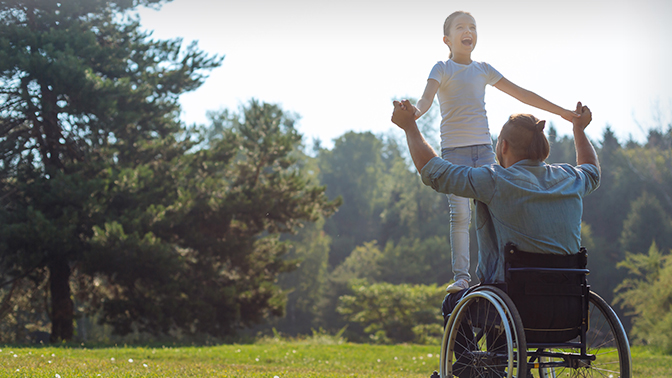
UHN researchers have created a unique rehabilitation program that can help some of the 86,000 Canadians that live with a spinal cord injury achieve greater independence.
Spinal cord injuries can be ‘complete’—leading to the total loss of movement control at and below the site of injury—or ‘incomplete’—when some ability to move is retained.
Individuals living with an incomplete spinal cord injury can regain some standing and walking abilities; however, they often have trouble balancing, which makes it difficult for them to stand without support and puts them at a high risk of falling.
To address this issue, a team led by Drs. Kristin Musselman and Kei Masani, researchers at the KITE Research Institute, explored whether a new balance training program could improve perceived standing ability and confidence in individuals with an incomplete spinal cord injury.
This study builds on previous research in which the team evaluated the innovative four-week balance training program. The program involves balance exercises combined with performance feedback, which is displayed on a computer monitor. During the exercises, electrical stimulation is applied to the ankle muscles to induce contractions that help the participants maintain balance. Repeated exercise with muscle stimulation helps to retrain the nervous system to achieve greater balance control (Front Neurol., 2020 (link is external)).
“Our initial study showed that this program improves balance, but it did not give us any insights into whether the participants felt that the program was beneficial,” explains Dr. Musselman. “It is important to consider the perceived benefits of a training program to ensure that the programs we are developing are meaningful to patients. Patients are more likely to participate in rehabilitation if they find it valuable.”
To explore participants’ perspectives, the researchers interviewed five individuals who completed the training program. The participants answered questions about their goals and expectations, and how the program impacted their life, balance confidence and risk of falling.
Participants reported that the program increased their range of motion and muscle strength and decreased muscle spasms and pain. They also reported feeling more independent and better able to complete daily tasks such as cooking, self-dressing and using the washroom.
Importantly, participants gained confidence in their physical abilities and became more willing to try new activities. They also felt that they could continue to improve and were motivated to carry on with balance training.
“We knew that our balance training program benefits patients physically, but now we see that it also benefits them psychologically,” says Dr. Musselman. “This program can help individuals with an incomplete spinal cord injury gain the confidence needed to be more independent and carry out meaningful daily activities.”
Although this rehabilitation program is not yet available in clinics, the researchers have recently received funding to develop a new version of it that is appropriate for clinical practice. They hope to test this new program in patients with spinal cord injury, as well as stroke, in the next few years.
This work was supported by the University of Toronto EMHSeed Program and the UHN Foundation.
Houston DJ, Unger J, Lee JW, Masani K, Musselman KE. Perspectives of individuals with chronic spinal cord injury following novel balance training involving functional electrical stimulation with visual feedback: a qualitative exploratory study. (link is external) J Neuroeng Rehabil. 2021 Apr 1. doi: 10.1186/s12984-021-00861-z.

Dr. Kristin Musselman (L) is a Scientist at the KITE Research Institute. Dr. Kei Masani (R) is a Senior Scientist at the KITE Research Institute.




